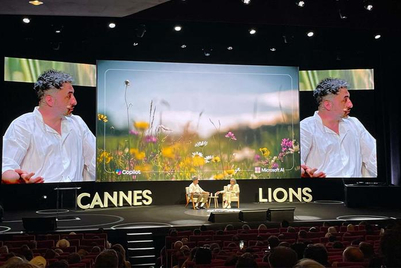
An unprecedented level of remote working have been enforced across Greater China during the COVID-19 outbreak and for the first time, companies across the region are facing the unfamiliarity of working from home.
Even before the outbreak working from home was becoming commonplace, in fact, globally 56% of companies allow remote working. But the idea of working at home in Asia seems to be discouraged or practiced less. This could be because it’s the employer requiring staff to be at their desks fearing a drop in productivity; or questioning employees’ ability to stay focused at home; or the employees sense of duty to be ‘present’ at work.
As the Hong Kong government opens office doors to civil servants after a month of remote working and China encourages their population to return to work, I, as a business leader, have also had to make a choice for my staff. Does everyone come back to the office, a partial return, a staggered return or continued flexible work policies? And in any of these cases, how can I ensure I provide the best working conditions to support their efficiency, output and mental health?
The impact on employee wellbeing
Studies on remote working point to both ends of the scale, with some stating that remote working leads to increased levels of stress compared to office workers, while others suggest that flexible working arrangements lead to higher employee satisfaction and increased productivity.
For many, the idea of working from home sounds appealing. Our team shared their pros and cons in a team meeting discussion after our recent period of enforced remote working. What we found was many appreciated the no commuting part, saving an enormous amount of time and being able to spend that time on getting work done. Some say they have fewer distractions, and they can manage their schedule more effectively.
Some, on the other hand, find it difficult to stay focused and feel disrupted by home distractions especially for colleagues who have children at home. They feel frustrated over the lack of basic office equipment and feel more stressed with no real ‘off’ time. In Greater China, where living spaces are generally smaller, people also have to fight for space and internet connection with family.
What we found interesting was that for some of our colleagues who dropped by the office intermittently throughout the week, they experienced a significant increase in both motivation and felt less stressed during this time. This is a huge insight given event professionals are known to have one of the most stressful jobs globally (5th on the list comparable to paramedics and firefighters) and as leaders in this space, we’re constantly looking for ways to mentally and emotionally support our people.
How effective is working remotely in experiential?
The realities of remote working in experiential isn’t the same as remote working for other businesses. Experiential is about bringing people together, whether it’s team leads coming together for a creative brainstorm or producers and suppliers nutting out the best construction and build methods. Creating an experience also involves a number of stakeholders, including clients, creatives, and various working partners such as production, logistics, venue, and catering. The key is communication.
With today’s technology, we’re able to effectively communicate with one another without having to physically be in the same space. Software like Microsoft Teams, Skype and Zoom have been instrumental in enabling us to share our ideas, work on proposals collectively and just be present.
In fact, our creative brainstorms through this technology have taken on a life of their own, with many of our colleagues saying the process has led to an increase in productivity as it’s much easier to share ideas and present them. By asking people to share their ideas on screen, people tend to do more research and as a result come up with more coherent ideas.
Overall, we’ve seen quicker team responses and people are generally more present which has also led to an increase productivity.
Experiential is all about emotional connections - interactions sparked and memories formed when you bring people together face-to-face. The benefits of this for businesses are proven and profound. And I think the same benefits apply to our workforce. In person, the connections and bonds we make are stronger and the quality of our creative and our work increases. But our lifestyles have changed, the boundaries of work and home are blurred, and we need to evolve how we manage our teams.
We want to provide the right support to everyone to balance their needs with the needs of the business and there is no one-size-fits-all solution for remote working. Even within one company there are nuances across geographies, offices, clients, departments and individuals. Instead of remote working, we should be looking at flexible working practices. Flexible working arrangements could help achieve the best of both worlds. For example, six core hours a day with two hours flex, or three days a week in office and two days flex, or a maximum number of flex days per month.
This period of enforced remote working has opened my eyes even more to the pros and cons of remote working. If we can create the right framework, we can bring out the best in our employees and deliver great work for our clients.
Natalie Ackerman is EVP, Greater China at Jack Morton



.jpg&h=334&w=500&q=100&v=20250320&c=1)



.png&h=334&w=500&q=100&v=20250320&c=1)



.png&h=334&w=500&q=100&v=20250320&c=1)

.jpg&h=268&w=401&q=100&v=20250320&c=1)

.jpg&h=268&w=401&q=100&v=20250320&c=1)

.png&h=268&w=401&q=100&v=20250320&c=1)
.png&h=268&w=401&q=100&v=20250320&c=1)

